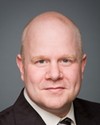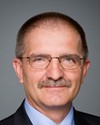In my view, both of our projects are quite proximate to hydro sources, which are clean, renewable sources of electricity. The problem in the Northwest Territories is investment in expanding those facilities. If we don't have access to grid power, then we have to put in some kind of independent power source, and in the Northwest Territories those are typically diesel plants, because that's the most efficient fuel, basically, from transportation.
However, we're also looking at the possibility of using compressed natural gas, which is significantly cheaper and also highly efficient, but it's not very good for variable loads. It's fine for baseloads, and when you're using mining equipment and you turn on a ball mill, for example, then you've got very significant demand loads. Diesel is the best alternative in that particular case.
I guess I'm coming back down to the issue of our thinking that there's a place for government to invest in basic infrastructure, whether it be roads or power, to enable development of resources in Canada and particularly in the north.




